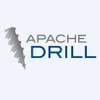Summary: Big data comprise of four types named structured, unstructured, semi-structured, and quasi-structured data. Let’s learn about each big data type in detail below!
Most organizations rely on the data sets to gain insights and learn about their customers, industry, and company. However, when the data increases in size, it becomes difficult to handle and process the data.
These data sets are called big data sets which have a greater data variety and are enormous in nature. Big data can come in several forms such as structured, unstructured, semi-structured, and quasi-structured.
Let’s learn more about different types of big data sets in the article below.
What are the Popular Types of Big Data?

Big data is categorized into these four main types as enumerated below:
Structured Data
Structured data is a kind of data which has a standardized format that can be easily accessed by the software and people. It is generally in tabular form with various rows and columns that highlight the data attributes.
Structured data comprise quantitative data like age, contact number, credit card numbers, and so on. Since it is quantitative in nature, the software can easily process it to gain valuable insights.
To process the structure data, you do not need to put the data to relevant metrics. Moreover, the structure data does not need to be converted and interpreted in deep to gain valuable insights.
Where to Use Structured Data Type?
- Managing customers data
- Maintaining invoices details
- Storing product databases
- Recording contacts list
Pros and Cons of Structured Data
- This makes it easier to process the data because it is stored in a defined format.
- The data is processed quickly compared to the unstructured data
- It might not be suitable for all types of information because the data is stored in a specific format.
Unstructured Data: XML, JSON, YAML

Unstructured data is a kind of data that does not confine to a specific data model and identifiable structure that can be read by a computer program. This type of data is not organized properly defined manner and lacks any sequence or format to process data.
As compared to structured data, this type of data cannot be stored in the form of rows and columns. A common example of unstructured data is a heterogeneous database which contains a combination of images, videos, text files, etc.
Where to Use Unstructured Data Type?
- Managing audio and video data
- Handling open ended survey responses
- Handling social media posts
- Managing business documents
Pros and Cons of Unstructured Data
- Since there is no defined structure, the data can be collected quickly.
- It can be used to deal with heterogenous data sources.
- Due to the lack of any structure or schema, it is more difficult to manage.
Semi-Structured Data

Semi-structured data is a kind of data that is not structured properly but at the same time not entirely unstructured. This data does not stick to the rigid schema and data model. Moreover, it might also contain components that cannot be easily categorized or classified.
The semi-structured data is characterized by metadata and tags which provide extra information about all the data elements. For instance, an XML file can contain tags indicating the document structure and include extra tags which provide metadata about content like the date or keywords.
Where to Use Semi-Structured Data Type?
- Analyzing webpages through HTML
- Using emails’ data to gain insight on customers
- Categorizing and analyzing videos and images
Pros and Cons of Sem-Structured Data Type
- The schema of the data can be changed.
- This type of data can accommodate data that may not fit into a predefined schema.
- Data queries are less efficient compared to structured data.
Quasi-Structured Data
Quasi-structured data is a type of textual data that comes with erratic data formats. This type of data can be formatted with different data analysis tools. It includes data like web clickstream data.
Where to Use Quasi-structured data Type?
- It can be used for analyzing the web pages data
Pros and Cons of Quasi-Structured Data Type
- The data can be processed quickly.
- This type of data can be quickly formatted through data analysis tools.
- It might take time to load data.
What are the Sub Types of Data?
There are several data sub types that are not considered big data but are important for analysis. The origin of such data can be from social media, operational logging, event-triggered, or geospatial. It can also come from open-source systems, data transmitted via API, and lost or stolen devices.
Characteristics of Big Data

There are five Vs that define the characteristics of big data. These characteristics are enumerated below:
- Volume: The first characteristic of big data is volume. Big data is the vast “volume” data gathered from several sources. The sources might include business procedures, social media platforms, machines, human interactions, etc.
- Veracity: Veracity can be defined as the quality and accuracy of given data. The extracted data may have some missing elements or may not be able to provide valuable insights. Therefore, this characteristic is useful to identify the data quality and gain insights.
- Variety: Variety can be defined as the diversity of various data types. The data can be obtained from several data sources that might vary in value. The data gathered can be structured, unstructured, or semi structured. The data variety can be in the form of PDFs, emails, photos, audios, etc.
- Value: This can be defined as the value that the big data can provide. Pulling value from the gathered data is important to gain valuable insights from it. Organizations can use the same big data analytics tools through which they collected data to analyze it.
- Velocity: Velocity refers to the speed of how quickly the data is generated and moved. It is an important element for businesses that want their data to flow fast so that it is available at the right time to gain insights. The data can flow from various sources like machines, smartphones, networks, etc. Once the data is gathered, it can be analyzed quickly.
Sectors Using Big Data on Daily Basis
Big data can be used in multiple industries including healthcare, agriculture, education, finance, and so on. Let’s learn about the application of big data in the following sectors in detail below:
- Education: In the education sector, teachers can analyze students’ performance and dropout rates for optimizing the curriculum. Moreover, it can also help in identifying improvement areas by analyzing a student’s performance.
- E-Commerce: The ecommerce sector can use big data analytics to understand which procedures of your company are doing well or which of them need improvement. Moreover, you can also identify the content type that is driving engagement and which channels are driving the highest traffic.
- Healthcare: In healthcare, big data can be used to gain insights from biomedical research and provide personalized medicine recommendations to patients after analyzing their data. Moreover, by monitoring a patient’s condition in real-time, they can send alerts to the medical staff.
- Government: The government can use big data to analyze the citizen’s data in bulk across multiple parameters. For example, the big data of the census is analyzed to find out the number of youths in the country or the population of unemployed people. The findings can help them develop schemes and plans to target the right set of citizens.
Suggested Read: Top Business Intelligence (BI) Tools
Conclusion
Big data has made it easier for businesses to process bulk data sets. When the data is sorted, organized, and analyzed in bulk, it can help businesses gain valuable insights. More and more industries are relying on big data analysis to process complex data and leverage the inference for their competitive advantage.
FAQs Related to Types of Big Data
What is big data and what type of big data?
Big data is a kind of data which contains greater variety, comes in increased volume, and with more velocity. The types of big data include structured, unstructured, and semi-structured.
What are the three types of Big Data classification?
The three types of Big Data classification are structured, unstructured, and semi-structured data.
What are the 4 components of Big Data?
The four major components of big data are volume, velocity, variety, and veracity.
What are the 6 characteristics of Big Data?
Big data has the following characteristics that help analyze data: volume, variety, veracity, variability, velocity, and value.
What are the sources of big data?
The major sources of big data could be grouped under social, machine, and transactional. Social sources are the most used big data sources for the organization. It includes social media posts, posted videos, etc.
Varsha is an experienced content writer at Techjockey. She has been writing since 2021 and has covered several industries in her writing like fashion, technology, automobile, interior design, etc. Over the span of 1 year, she has written 100+ blogs focusing on security, finance, accounts, inventory, human resources,... Read more





























